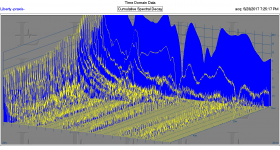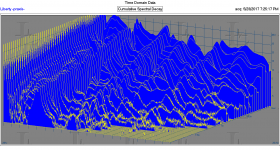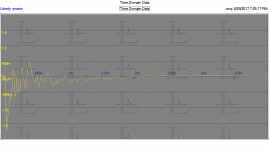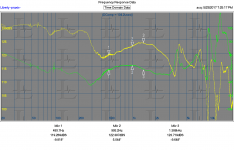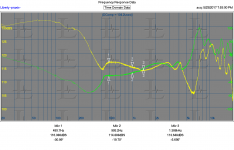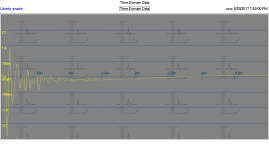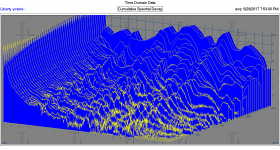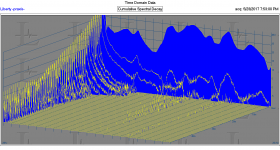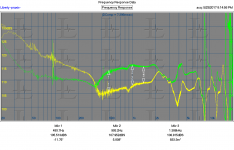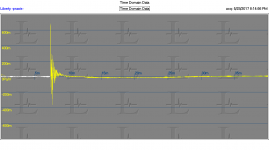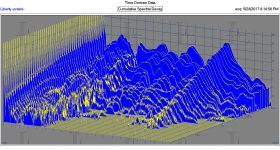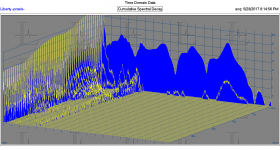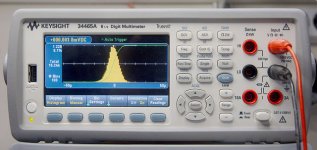Now why do I bring this up? Well, there is a new physics that is in the background today, that can be as important to audio quality as almost any new development in parts or circuits.
From the scientific community or the usual guys in their garages?
12bit vertical resolution 200KHz bandwidth, spot on to it’s volt & freq measurements, reliable from 1Hz to 240KHz, in kit form, for 24Euro.
George
George, where from can be bought the kit?
Thank you.
George, where from can be bought the kit?
Thank you.
Looks like maybe from here: JYE Tech: DIY Oscilloscopes, DIY Kits for Hobbyists
I built a DSO138 "oscilloscope" kit and found it to be a nearly useless toy link to diyAudio post. Its triggering is terrible and its bandwidth in practice, is a lot less than the claimed 0.2 MHz.
George, where from can be bought the kit?
Thank you.
"Original JYE Tech DSO-SHELL DSO150 15001K DIY Digital Oscilloscope Kit With Housing"
https://www.banggood.com/Orignal-JYE-Tech-DS0150-15001K-DSO-SHELL-DIY-Digital-Oscilloscope-Kit-With-Housing-p-1093865.html?rmmds=search
George
Bargains are nice, but next to useless to make better audio designs. Either you guys are very, very poor, or you have little interest in audio design to take such a 'toy' oscilloscope seriously.
For example, when I was young, in 1962, I built an EICO 5MHz oscilloscope kit that cost me $100 at the time and took lots of time to put together. Now, it was not in any way perfect, BUT it appears to have run rings around these 'toys' that you are discussing. Of course, when I was introduced to TEK scopes through work and friends, I put my EICO aside, but it was at least 'useful' for several years while a student. These 'toys' remind me of my first digital camera that I bought at Radio Shack. Next to useless.
For example, when I was young, in 1962, I built an EICO 5MHz oscilloscope kit that cost me $100 at the time and took lots of time to put together. Now, it was not in any way perfect, BUT it appears to have run rings around these 'toys' that you are discussing. Of course, when I was introduced to TEK scopes through work and friends, I put my EICO aside, but it was at least 'useful' for several years while a student. These 'toys' remind me of my first digital camera that I bought at Radio Shack. Next to useless.
Taking waterfalls at the low end requires linearizing of phase, so it is not that easy to take those kinds of measurements. If you don't linearize phase, the BR waterfall looks worse than sealed waterfall for the mere reason that the former has more phase shift. This creates a measurement artefact.
I'm still lost on the phase linearization thing. Attached are some plots of a not special headphone. The nominal measurement level was 90 dB SPL. Selected because the distortion was around .1%.
First a 50 mS waterfall. The vertical is around 40 dB. You can see the decay at low frequencies and the power line artifacts. And that there is no real info here.
Second is a 2 mS waterfall. This is more conventional and shows the stuff you would look for to improve the driver (and housing in this case).
Third is the time domain response (impulse response) that the waterfall was derived from.
Finally the amplitude and phase response, Decidedly NOT flat.
Attachments
I'm using headphones because they bring their own quasi-anechoic environment with them. If I can find a noise cancelling headphone i'll try that as well.
Here is another headphone with a different phase and frequency response. What should we see as an artifact?
Here is another headphone with a different phase and frequency response. What should we see as an artifact?
Attachments
I found a digital noise cancelling headphone. The delay through the DSP shows in the time domain plot with 7 mS delay. The frequency response shows the impact of ANC in the bass.
Attachments
Some discussion of phase linearization here: The Arion/Essex Acoustics Digital Loudspeaker Correction System:
Also, believe Hawksford wrote an AES article on the subject, but I don't have a link.
It has to do with how nice impulse responses look, and maybe waterfall plots too (possibly those produced by FFT processing of the impulse). However, waterfall plots can also be produced with bursts of sin waves, so at least no issues with possible FFT artifacts that way.
Also, believe Hawksford wrote an AES article on the subject, but I don't have a link.
It has to do with how nice impulse responses look, and maybe waterfall plots too (possibly those produced by FFT processing of the impulse). However, waterfall plots can also be produced with bursts of sin waves, so at least no issues with possible FFT artifacts that way.
Last edited:
A good driver will not show many resonances and all freqs decay fast and at same rate.
Such as this ---
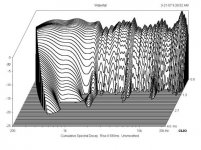
Question? do we measure speaker response or response in listening room with a microphone placed at the ear drum of a dummy head/ear?
We shouldn't do it with headphones either. Unless, they are in-ear type.
THx-RNMarsh
Such as this ---

Question? do we measure speaker response or response in listening room with a microphone placed at the ear drum of a dummy head/ear?
We shouldn't do it with headphones either. Unless, they are in-ear type.
THx-RNMarsh
I'm still lost on the phase linearization thing.
I went through my library of measurements and found good examples to show the difference between how a phase corrected speaker measures against one that isn't (not the same speaker).
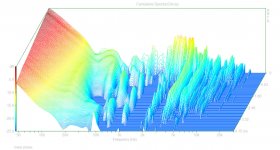
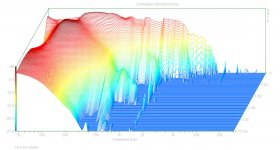
The left corner cannot be trusted (what else is new?).
Although the measurement of the linear phase speaker might look cleaner, it is quite shitty as a matter of fact in comparison to the minimum phase speaker.
Measurements were both done in the same anechoic chamber, albeit at different times.
Last edited:
Sure but why would that help you? Don't forget it's the mediocre stuff at the shows that sells. Did JC get rich from great products?
You make the classic mistake to think that if your product sounds better than the other guys' product, customers will beat a path to your place. They wont. They don't even know, UNLESS you invest heavily in an expensive marketing campaign. And so we are back to square one.
Jan
I totally agree (sorry a bit late but ... Munich
Signature Origin | Home of Signature Quality
Professional work Frans! Chapeau!
How do you like your Keysight muiltimeter with all the extra feautures? I was just looking at it yesterday.
Can you disclose the retail price of the power amp?
Jan
It is a grotesc 52.000,-€.
7500 individual parts, parts cost alone : 15.000,-€.
Ad the margins.
Wrong thread?
I do object to 'grotesque'
Edit: Ooops I see, it is to answer Jan's question
Edit: 15k parts, labor and development
Last edited:
Professional work Frans! Chapeau!
How do you like your Keysight muiltimeter with all the extra feautures? I was just looking at it yesterday.
Can you disclose the retail price of the power amp?
Jan
Thanks
I love it to dead, and when it is (dead) I will get a new one. The instrument is build to a high quality standard and may never need replacement (in my life time).
52000
P.s.
One thing I do with the Keysight is measure totalized noise, offset and offset drift. These measurements run over long periodes at the maximum resolution of the instrument. The result is this (see picture) Gaussian curve, this one (after 15000 measurements, about 7 hours) shows a spread of (max) 20uV (I guess about 5uVrms). All amplifiers are tested in this way before leaving final assembly, if the base of the curve is not wider than 25uV the amplifier is acceptable
https://flic.kr/p/DTWLTd
Attachments
Last edited:
- Status
- Not open for further replies.
- Home
- Member Areas
- The Lounge
- John Curl's Blowtorch preamplifier part II
